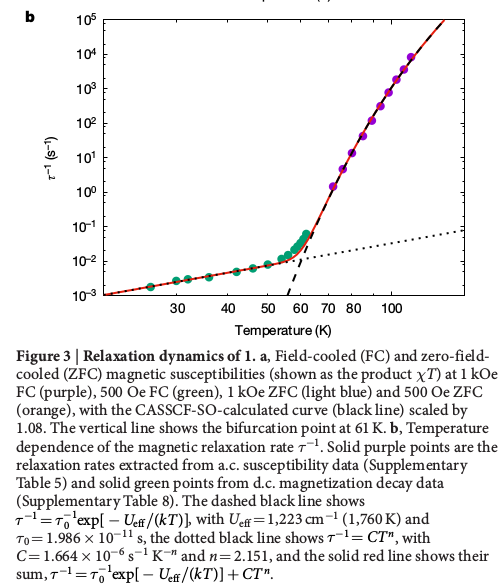
|
DySummary of single crystal Dy NMR experimentsThe electron relaxation time ({$T_{1e}$}) is obtained as {$\tau_e$} from magnetometry experiments on powders, C.P.Goodwin et al. Nature 548, 239.\ From this the 1H magnetic relaxation rate in an external field {$B$} is {$$\begin{equation} \frac 1 {T_1} = \frac {\omega_d^2\tau_e} {1 + (^1\gamma B \tau_e)^2} \end{equation}$$}  The probe-dependent blocking temperature {$T_B$}, at which {$\tau_e^{-1}=^1\gamma B \approx 10^{9}$} s-1, is above room temperature. Therefore wee are on the anti-narrowing side of Eq. 1, i.e. {$^1\gamma B\tau_e \gg 1$}, hence {$$\begin{equation} {T_1} = \left(\frac {^1\gamma B \tau_e}{\omega_d^2}\right)^2 \tau_e \end{equation}$$} At {$B=4$} T, when probing protons at {$\Delta\nu =2$} MHz below the proton Larmor frequency {$^1\gamma B = 170$} MHz the squared factor is {$(80)^2 = 6400$}. This predicts (very roughly)
|